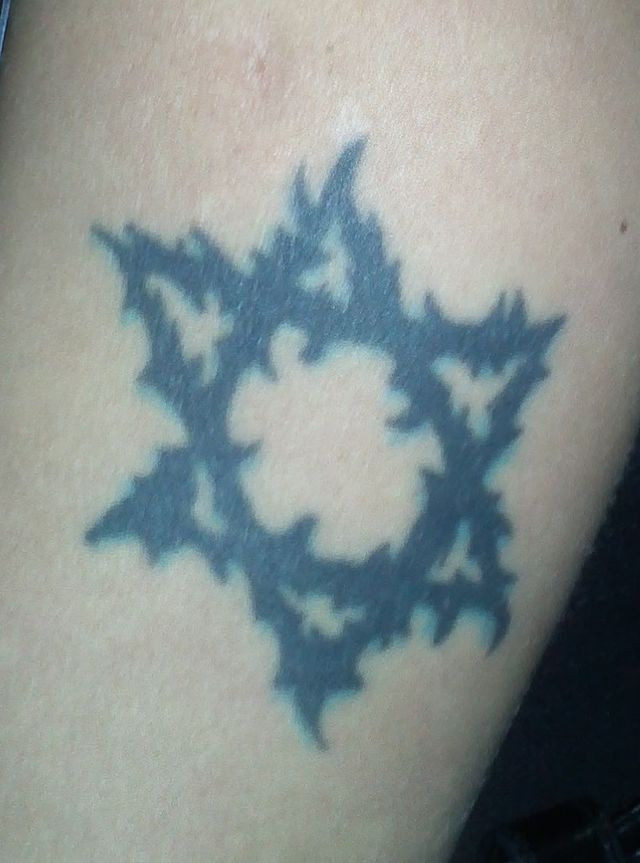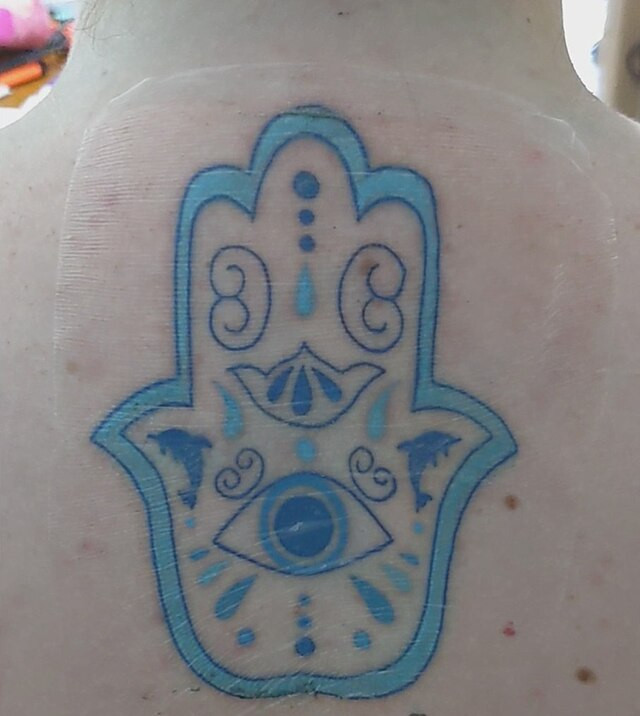Tattoos have become an increasingly popular form of self-expression in modern society, crossing cultural and religious boundaries. For individuals of Jewish heritage, the intersection of tattoo artistry and Jewish identity presents a unique and evolving landscape. While traditional interpretations of Jewish law discourage tattoos, a contemporary wave of Jewish individuals are embracing body art, often incorporating Hebrew script and meaningful Jewish symbols into their designs. This article delves into the world of Hebrew tattoos, with a particular focus on back arm placements, exploring their cultural significance, design considerations, and the ongoing dialogue surrounding tattoos within Judaism.
The Historical and Religious Context of Tattoos in Judaism
The discussion around Hebrew tattoos cannot begin without acknowledging the traditional Jewish perspective on body modification. The primary source of this perspective is found in Leviticus 19:28, which states: “You shall not make gashes in your flesh for the dead, or incise any marks on yourselves.” This verse has been widely interpreted as a prohibition against tattooing, and it has shaped Jewish attitudes towards body ink for centuries.
Historically, the reasons behind this prohibition are varied and debated. Some scholars believe it was a way to differentiate the Israelites from surrounding pagan cultures who practiced ritualistic scarification and tattooing as part of mourning or idolatrous practices. Others suggest it was related to the concept of the body as belonging to God, and therefore, not to be permanently altered. Regardless of the original intent, this biblical verse became a cornerstone of Jewish law against tattoos, contributing to a general aversion within the Jewish community.
However, it’s important to note that the historical context of tattooing is rich and diverse. Ancient cultures worldwide, from Egypt to the Arctic, practiced tattooing for various reasons, including ritual, status, medicinal purposes, and personal adornment. Even within the ancient Near East, the practice was not uncommon. The very existence of the prohibition in Leviticus suggests that tattooing was likely known, if not practiced, among the Israelites or their neighbors, making the commandment a deliberate distinction.
Interpretations and Evolving Perspectives on Jewish Law and Tattoos
While the Levitical prohibition is clear, interpretations and contemporary perspectives on Jewish law regarding tattoos are nuanced and evolving. Orthodox Rabbi Yirmiyahu Ullman, as mentioned in the original article, acknowledges the Torah’s explicit prohibition but also emphasizes that having a tattoo, even a “decorative” one, does not disqualify a person from Jewish burial or community participation. This highlights a distinction between the act of getting a tattoo being considered a sin in traditional Orthodox views, and the individual still being considered part of the Jewish community.
Conservative Rabbi Alan Lucas further clarifies that the prohibition, according to some interpretations, is against voluntary tattoos and may not apply to forced tattoos, such as those inflicted on Holocaust survivors. He points to the Shulchan Aruch, a definitive code of Jewish law, which states that if a tattoo is done “in the flesh of another, the one to whom it was done is blameless.” This distinction is crucial when considering the deeply traumatic history of forced tattooing during the Holocaust.
Moreover, within contemporary non-Orthodox Jewish movements, attitudes towards tattoos are generally more lenient. Many Reform and Reconstructionist Jews view the Levitical prohibition in its historical context and prioritize individual autonomy and self-expression. For these individuals, getting a tattoo, including a Hebrew tattoo, can be a meaningful way to connect with their Jewish identity.
Holocaust Tattoos: A Stark Counterpoint
The history of tattoos within Judaism takes a horrific and deeply significant turn with the Holocaust. During this period, the Nazi regime forcibly tattooed numbers onto the arms of Auschwitz concentration camp inmates. These tattoos were not chosen acts of self-expression but rather dehumanizing brands designed to strip individuals of their names and identities, reducing them to mere numbers within a system of extermination.
Yehiel Dinur, known as Ka-Tzetnik 135633, a Holocaust survivor and author, powerfully articulated the impact of these tattoos. He described Auschwitz as a separate “planet” where inhabitants were defined by numbers, not names. His testimony at the Eichmann trial and his literary works underscored the indelible trauma and identity shift caused by these forced markings.
 Stylized star of David tattoo.
Stylized star of David tattoo.
However, even within this horrific context, some survivors found unexpected meaning in their tattoos, as Professor Gilah Naveh’s research reveals. For some female survivors, the tattoo, despite its intended purpose, became a symbol of uniqueness and survival, a mark that distinguished them as individuals when the Nazis attempted to erase their identities. Szlamach Radoszynski, another survivor, even found personal significance in the numerical sum of his tattoo, linking it to the Jewish mystical symbol for life.
These Holocaust tattoos stand as a stark and tragic counterpoint to the contemporary trend of voluntary Hebrew tattoos. They serve as a permanent reminder of unimaginable suffering and loss, yet also, paradoxically, as a testament to resilience and survival.
Contemporary Hebrew Tattoos: Reclaiming and Redefining Identity
In stark contrast to forced Holocaust tattoos, contemporary Hebrew tattoos represent a conscious and voluntary choice. For many modern Jews, getting a Hebrew tattoo is not an act of rebellion against Judaism, but rather a powerful way to express and reclaim their Jewish identity in a personal and visible manner.
As the original article points out, younger generations of Jews are increasingly embracing tattoos, including those with Jewish themes. This trend reflects a broader societal acceptance of tattoos and a desire among individuals to outwardly display their affiliations and beliefs. In the context of Jewish identity, this can be seen as a way to navigate the complexities of modern Jewish life, blending tradition with personal expression.
Motivations for getting Hebrew tattoos are diverse and deeply personal. Some common reasons include:
- Affirmation of Jewish Identity: For many, a Hebrew tattoo is a public declaration of their Jewish heritage and a way to connect with their roots. It can be particularly meaningful for individuals who feel a strong cultural or ethnic connection to Judaism, even if they are not strictly religiously observant.
- Spiritual Connection: Hebrew, as the language of the Torah and Jewish prayer, holds deep spiritual significance. Tattooing Hebrew words or phrases can be a way to embody and carry that spirituality with them.
- Memorialization and Remembrance: Hebrew tattoos can be used to honor loved ones, commemorate important life events, or remember Jewish history and traditions.
- Aesthetic Appreciation: The beauty of the Hebrew script itself is a draw for many. The elegant and flowing lines of Hebrew letters lend themselves well to tattoo artistry.
Avi, in the original article, chose to tattoo her name in Hebrew on her lower back, surrounded by blue flames and a dove. Judith opted for a hamsa tattoo, a Sephardic symbol of God’s protection, between her shoulder blades. Isaac chose phrases like “tzedek tzedek tirdof” (Justice, justice you shall pursue) and “sored” (survivor) as daily reminders of his values and identity. Matthew incorporated a Star of David into a dragon tattoo and a modified chai symbol, expressing his pride in being Jewish. These examples illustrate the wide range of personal meanings and creative expressions found in contemporary Hebrew tattoos.
Hebrew Tattoos on the Back Arm: Placement and Design Considerations
The back arm, particularly the forearm and upper arm, has become a popular placement for tattoos in general, and Hebrew tattoos are no exception. This location offers several advantages:
- Visibility: Back arm tattoos can be easily displayed or concealed depending on the situation. They can be shown off in short sleeves or hidden under long sleeves, offering flexibility in personal and professional settings.
- Space: The back arm provides a relatively large and flat canvas, allowing for more elaborate designs or longer Hebrew phrases.
- Pain Level: Compared to more sensitive areas, the back arm is generally considered to be less painful for tattooing.
When considering a Hebrew tattoo on the back arm, several design elements come into play:
- Script Style: Hebrew script comes in various styles, from traditional block lettering to more stylized and artistic fonts. Choosing a script style that resonates with the individual’s aesthetic preferences and the overall tattoo design is important.
- Word or Phrase Selection: The meaning of the Hebrew words or phrases is paramount. Common choices include:
- Names: Personal names, names of loved ones, or biblical figures.
- Religious Symbols: Star of David (Magen David), Hamsa, Chai (life), Menorah.
- Biblical Verses or Phrases: Quotes from the Torah, Psalms, or other Jewish texts.
- Values and Principles: Words like tzedek (justice), shalom (peace), ahava (love), emet (truth).
- Accompanying Imagery: Hebrew script can be combined with other images to enhance the tattoo’s meaning and visual appeal. Examples include:
- Nature imagery: Doves, olive branches, flowers, trees of life.
- Geometric patterns: Stars, circles, abstract designs.
- Tribal or cultural motifs: Integrating Hebrew script into broader artistic styles.
 Dolphin hamsa under Tegaderm.
Dolphin hamsa under Tegaderm.
Placement on the back arm can further influence the design. A longer phrase might be best suited for the forearm, running vertically or horizontally. Smaller symbols or single words might be placed on the upper arm or wrist. The curvature of the arm can also be used to enhance the design’s flow and visual impact.
Jewish Cemetery Burial and Tattoos: Dispelling the Myth
A persistent myth within the Jewish community is that having a tattoo prevents one from being buried in a Jewish cemetery. As Marvin Moskowitz, the tattoo artist, points out in the original article, many Jews believe this to be true. However, this is unequivocally false.
Jewish law prohibits tattooing, but it does not impose any sanctions on individuals who have tattoos in terms of burial or community membership. As Rabbi Alan Lucas and Rabbi Yirmiyahu Ullman confirm, having a tattoo, even a voluntary one, does not bar a person from being buried in a Jewish cemetery or participating fully in Jewish life.
The story of Grandpa Dave in the original article poignantly illustrates this point. Despite having a tattoo, he was buried in a Jewish cemetery with full Jewish rites and honors. This anecdote underscores the fact that while traditional Jewish law discourages tattoos, it does not equate having a tattoo with being excluded from the Jewish community or its rituals, including burial.
This myth likely stems from a misunderstanding of the severity of the tattoo prohibition and a conflation of religious disapproval with communal exclusion. It is crucial to dispel this myth to alleviate unnecessary anxieties and ensure that individuals with tattoos feel fully included and accepted within the Jewish community.
Choosing a Hebrew Tattoo Artist and Design
For those considering a Hebrew tattoo, choosing the right artist and design is essential. Here are some key considerations:
- Artist Experience: Seek out a tattoo artist with experience in Hebrew script and lettering. Hebrew letters have specific shapes and proportions, and an artist unfamiliar with the script may make mistakes that can alter the meaning or legibility of the tattoo. Reviewing an artist’s portfolio for examples of Hebrew or script tattoos is highly recommended.
- Design Consultation: A reputable tattoo artist will offer a consultation to discuss your ideas, placement preferences, and design options. This is an opportunity to ensure the artist understands your vision and can translate it effectively into a tattoo.
- Meaning and Accuracy: Double-check the spelling and meaning of any Hebrew words or phrases with someone fluent in Hebrew or a knowledgeable religious authority. Mistranslations or misspellings can be easily avoided with careful verification.
- Personal Significance: Choose a design that holds personal meaning and resonates with your Jewish identity. Whether it’s a meaningful phrase, a symbolic image, or a combination of both, the tattoo should be a reflection of your individual connection to Judaism.
- Placement Considerations: Discuss placement options with your artist, considering visibility, design size, and pain tolerance. The back arm offers versatility, but other placements may also be meaningful depending on the design and personal preferences.
Conclusion: Hebrew Tattoos as a Modern Expression of Jewish Identity
Hebrew tattoos on the back arm and other locations represent a fascinating intersection of ancient tradition and modern self-expression. While traditional Jewish law discourages tattoos, contemporary Jewish individuals are reinterpreting and engaging with this prohibition in diverse ways. For many, Hebrew tattoos are not acts of rebellion but rather powerful affirmations of Jewish identity, spirituality, and cultural connection.
They stand in stark contrast to the forced tattoos of the Holocaust, reclaiming the act of tattooing as a voluntary and meaningful choice. As a visible symbol of Jewish heritage, Hebrew tattoos contribute to the ongoing evolution of Jewish identity in the modern world, reflecting both respect for tradition and a desire for personal expression. Whether chosen for their aesthetic beauty, spiritual significance, or cultural resonance, Hebrew tattoos on the back arm and beyond are becoming an increasingly visible and accepted part of the diverse tapestry of contemporary Jewish life.
